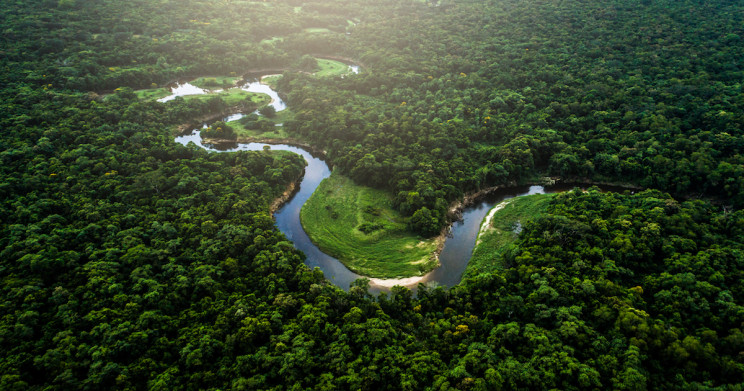The Amazon Basin is considered to contain the largest rainforest as “Amazon rainforest” in the world. This amounts to more than sixty percentage of the remaining rainforest of the world. The Amazon Rainforest spans over an extensive area of around 2 million miles that stretches across 9 South American nations that includes Brazil, Peru, Columbia, Ecuador, Venezuela, Guyana, Bolivia, French Guiana, and Suriname.
This rainforest is renowned as a vast collection of ecological services for local communities, and tribes and the world. The Amazon rainforest, is closely linked with global warming, nature and several other environmental conditions. Let us learn about its significance in detail.

Impact of Amazon rainforest
Biodiversity: This lush green region has around five hundred indigenous communities that are greatly benefitted by this forest. Being a biodiverse ecosystem, Amazon rainforest is home to several unknown species of animals, and plants. They play a vital role in preserving the health of the rainforest as well as influence the environment of the world.
From poison frogs to jaguars, the Amazon rainforest houses the most fascinating animals and plants in the world. Around ten percentage of the species in the world are contained in the forest. There are around 2.5 million varieties of insects, 1,300 species of birds, 3,000 varieties of fish and around 415 species of mammals that impacts the weather all across the world.
Impacts the weather and climate of the globe: The plants in the Amazon rainforest influences climate, and weather in the world. They help play an exemplary role in regulating the ecology of a place. These plants photosynthesize, and create a suitable weather for the survival of living beings on the planet. As a result of the transpiration process, plants produce water vapor from its pores. The entry of moisture helps in planting cloud bands that locks the water in the forest and flows into river and supply communities. In this way, transpiration process helps in sustaining life on the Earth.
With the phenomenon, the Amazon rainforest creates 50 percentage to 75 percentage of precipitation. Transpiration greatly impacts weather throughout the Amazon. When the rain falls all over this forest, then warm air raises into the atmosphere. In this way, it pulls greater amount of moisture from the ocean that are located thousands of acres away. Water that gets released by these plants in the atmosphere via evapotranspiration mechanism (a combination of evaporation and transpiration) to the ocean, sustains the climate of the world and assist in better flow of ocean currents.
Medicinal uses: More than forty thousand species of species of plant, and herbs are found in this rainforest. A majority of them are touted for their medical uses, food and income generation. These potent herbs and plant species are capable of treating a wide range of ailments naturally. Rubber, vanilla, pepper, cinnamon, coffee, and chocolate are cultivated in this rainforest. All these trees are a good way to generate income for native communities that lives in the rainforest.
Reduces Pollution: There are around 389 billion trees spread across the Amazon Rainforest. They benefit the environment by cleaning and recycling the destructive carbon dioxide output. Plants absorb carbon di oxide from the air in their trunk, leaves and branches, and release oxygen. In this way, by photosynthesis, it takes away CO2 from the air and reduces pollution. Tropical rainforests are also seen to reduce the impact of the greenhouse effect, and the change in climate that when ignored can worse the atmosphere in the future.
As an estimate the forest has the ability to store around 85 billion tons of carbon. When these forests get burned, then more carbon matter get released as of CO2. Without conversion of this carbon to oxygen, the levels of carbon rise in the atmosphere. This excess amounts of carbon in turn pollutes the atmosphere. In addition to industrial pollution, widespread cutting of trees in South America has substantially increased the levels of CO2 in the entire atmosphere.
The Amazon River: Within the Amazon Basin, lies the 2nd longest river “Amazon River” in the world after the Nile River. This winding waterways spans the area of approx. 4,000 miles. It is enclosed by rich and dense wetlands. This winding river also comprises of several numerous species, that includes pancake stingrays, bellied piranha, caiman crocodiles, river dolphin, and bull sharks.
This river serves as a major means of transportation to local people. A large number of fishes in the river are a good source of protein for people. Flood in the river refills nutrient in the plains and are used for Agriculture.
Regulates Oxygen, and Carbon Cycle: Another important benefit of the Amazon rainforest is that it works remarkably in regulating the carbon and oxygen cycles in the world. This forest secretes around 6 percentage of the oxygen in the world, and absorbs massive amounts of CO2 from the atmosphere.